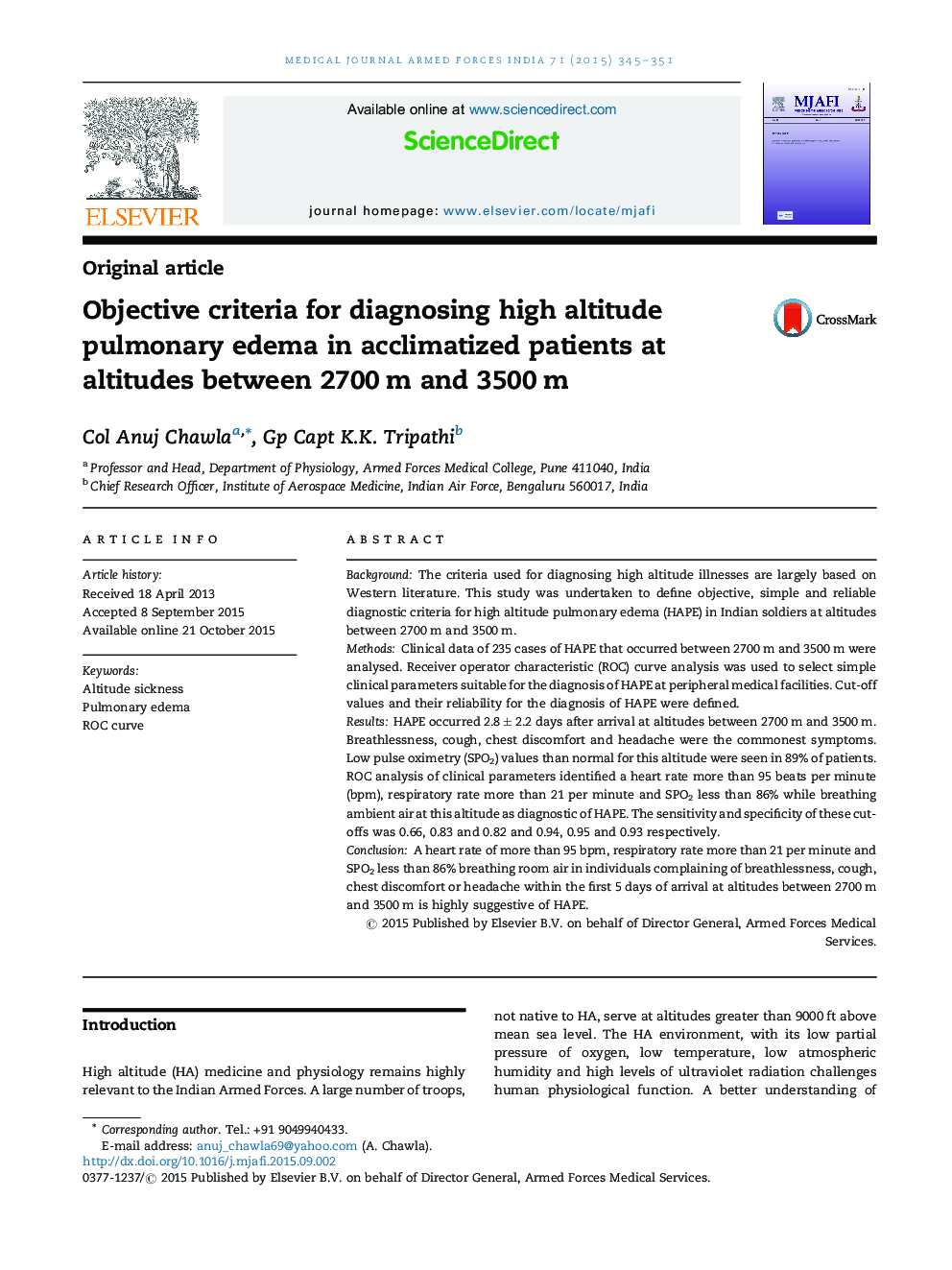| کد مقاله | کد نشریه | سال انتشار | مقاله انگلیسی | نسخه تمام متن |
|---|---|---|---|---|
| 3161042 | 1198594 | 2015 | 7 صفحه PDF | دانلود رایگان |
BackgroundThe criteria used for diagnosing high altitude illnesses are largely based on Western literature. This study was undertaken to define objective, simple and reliable diagnostic criteria for high altitude pulmonary edema (HAPE) in Indian soldiers at altitudes between 2700 m and 3500 m.MethodsClinical data of 235 cases of HAPE that occurred between 2700 m and 3500 m were analysed. Receiver operator characteristic (ROC) curve analysis was used to select simple clinical parameters suitable for the diagnosis of HAPE at peripheral medical facilities. Cut-off values and their reliability for the diagnosis of HAPE were defined.ResultsHAPE occurred 2.8 ± 2.2 days after arrival at altitudes between 2700 m and 3500 m. Breathlessness, cough, chest discomfort and headache were the commonest symptoms. Low pulse oximetry (SPO2) values than normal for this altitude were seen in 89% of patients. ROC analysis of clinical parameters identified a heart rate more than 95 beats per minute (bpm), respiratory rate more than 21 per minute and SPO2 less than 86% while breathing ambient air at this altitude as diagnostic of HAPE. The sensitivity and specificity of these cut-offs was 0.66, 0.83 and 0.82 and 0.94, 0.95 and 0.93 respectively.ConclusionA heart rate of more than 95 bpm, respiratory rate more than 21 per minute and SPO2 less than 86% breathing room air in individuals complaining of breathlessness, cough, chest discomfort or headache within the first 5 days of arrival at altitudes between 2700 m and 3500 m is highly suggestive of HAPE.
Journal: Medical Journal Armed Forces India - Volume 71, Issue 4, October 2015, Pages 345–351
